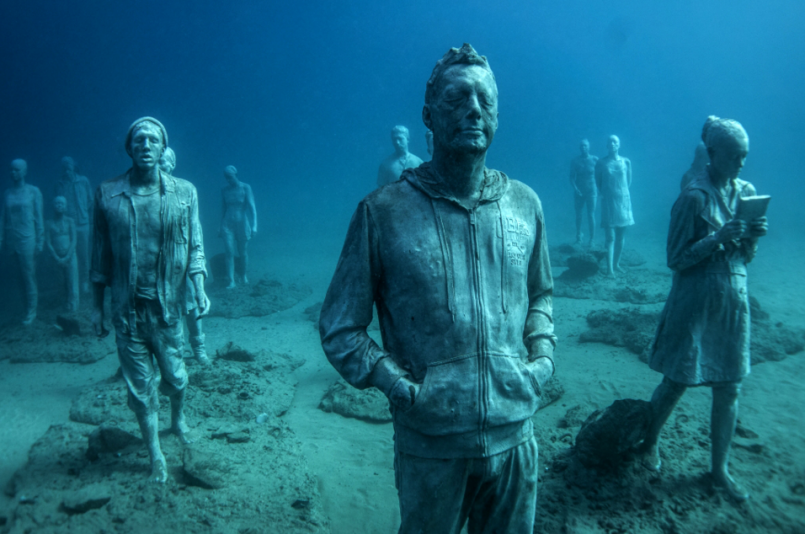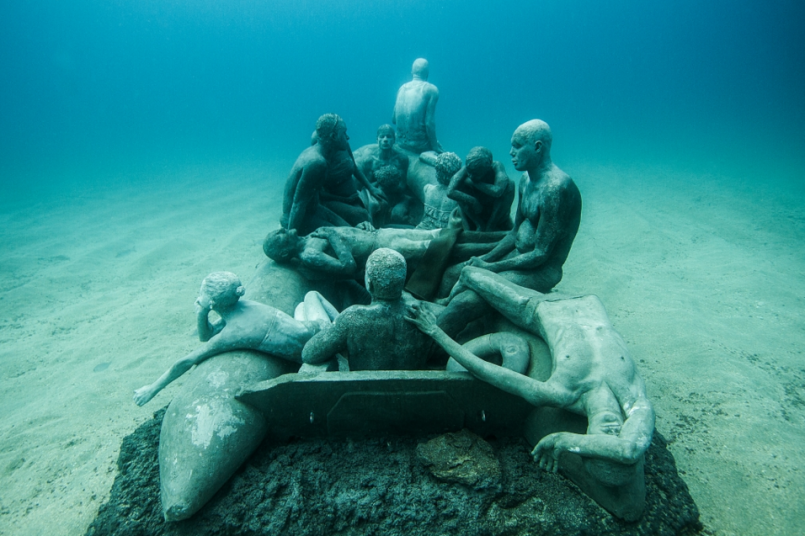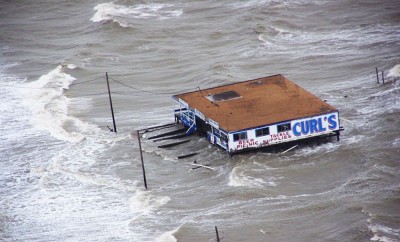Environment
Museo Atlantico: Europe’s Underwater Museum

Image: Underwater Sculpture
Museo Atlantico: Europe’s Underwater Museum
Set on the beautiful Spanish island of Lanzarote, Museo Atlantico holds the honor of being the first underwater museum in Europe. Visitors are invited to snorkel around the gallery of statues submerged in shallow water. Set to become an artificial reef, the site hopes to attract tourists from natural reefs and bolster the local ecosystem.
The Rubicon
Museo Atlantico’s exhibits are unbelievably modern, detailed and human-like. In The Rubicon, you’ll find a woman strolling in a bandeau top and slacks, midriff-exposed, hands in her pockets. Another statue sports a loose beanie, button-down shirt and cropped pants, creased and wrinkled as if by the wind. The statues include children, students and individuals grasping their tablet or mobile phone.
Each statue, though captivating in its own right, is just one small part of The Rubicon, which shows the statues walking towards a fence marked as the point of no return. Upon a deeper look, each living statue is walking with its eyes closed. The piece, featuring selfies and numerous sea-citizens glued to their devices, explores the human relationship with technology and its environment. In The Rubicon, we see the growing effect of climate change, and the apathetic human response even as we get closer to its irreversible consequences.
The Raft Of Lampedusa

Image: Underwater Sculpture
Among the most provocative pieces, The Raft of Lampedusa takes inspiration from Géricault’s 1818 painting, The Raft of the Medusa, which pictures the Méduse’s shipwrecked sailors fighting for their lives. In parallel, Taylor’s The Raft of the Lampedusa depicts refugees on a raft in differing states of thought. One man places his hand on a comrade’s back, another grasps a life vest and a child leans over the raft, chin in her palm. The raft, in it’s eerily lifelike place on the ocean floor, invites its patrons to consider the weight of the current refugee crisis.
Eco-Friendly Statues
The beauty of the museum lies in its living and evolving nature, visit it once and in a few years you’ll find a completely different piece. Each sculpture is composed of eco-friendly marine cement designed to draw sea creatures. While the statues currently stand in a pristine state, in a few years they’ll take on a new shape as they’re covered with crustaceans, coral, sponges and starfish. Year after year, visitors will enjoy a different experience.
Underwater Museum in Mexico and Other Locations
It may come as a surprise, but Museo Atlantico is not the world’s first underwater museum in the world. Other underwater sculpture locations include Mexico, Grenada, the United Kingdom and the Bahamas. All museums share a common creator, Jason deCaires Taylor. A photographer, sculptor, and naturalist. Taylor combined his love for art and scuba diving and began creating underwater museums.
Mexico’s Musa Cancun, home to a museum of more than 500 statues, was the first of its kind. Statues were installed in the area as early as 2009. Today, its statues surrounding Cancun, Punta Nizuc, and Isla Mujeres have taken on colorful form as numerous sea creatures now call these once lifeless figures home.
Museo Atlantico opens to the public on February 25, 2016.





0 comments